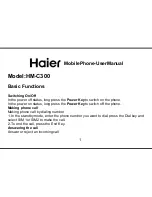
Press
, and select
Tools
>
Connectivity
>
GPS
data
.
The coordinates in the GPS are expressed in degrees
and decimal degrees format using the international
WGS-84 coordinate system.
To use GPS data, the GPS receiver of your device
must initially receive position information from at
least four satellites to calculate the coordinates of
your location. When the initial calculation has been
made, it may be possible to continue calculating the
coordinates of your location with three satellites.
However, the accuracy is generally better when
more satellites are found.
Route guidance
Press
, and select
Tools
>
Connectivity
>
GPS
data
>
Navigation
.
Start the route guidance outdoors. If started
indoors, the GPS receiver may not receive the
necessary information from the satellites.
Route guidance uses a rotating compass on the
device display. A red ball shows the direction to the
destination, and the approximate distance to it is
shown inside the compass ring.
Route guidance is designed to show the straightest
route and the shortest distance to the destination,
measured in a straight line. Any obstacles on the
route, such as buildings and natural obstacles, are
ignored. Differences in altitude are not taken into
account when calculating the distance. Route
guidance is active only when you move.
To set your trip destination, select
Options
>
Set
destination
and a landmark as the destination, or
enter the latitude and longitude coordinates. Select
Stop navigation
to clear the destination set for
your trip.
Retrieve position information
Press
, and select
Tools
>
Connectivity
>
GPS
data
>
Position
.
In the position view, you can view the position
information of your current location. An estimate of
the accuracy of the location is displayed.
To save your current location as a landmark, select
Options
>
Save position
. Landmarks are saved
locations with more information, and they can be
used in other compatible applications and
transferred between compatible devices.
Positioning (GPS)
61
Positioning (GPS)
















































